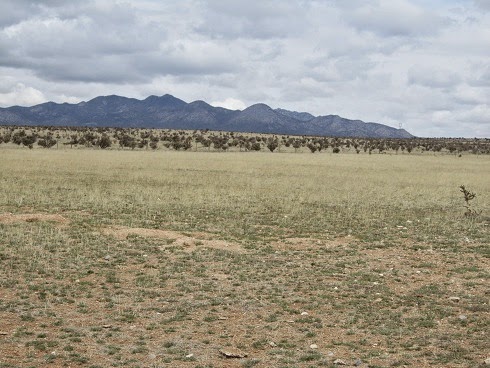Late spring is the hardest nutritional time of year for sheep. Even though it is a little warmer, there is still little nutrition on the landscape. Plants from last year are bleached of nutrients and this year's growth is yet in its earliest stages. High elevation landscapes are still cold, windy and dry, further retarding new plant growth. This leaves our sheep still relying heavily on stored nutrients and stored energy from last year. The situation for the ewes is further complicated by pregnancy. So feeding has to be done carefully.
Over conditioning ewes with too much nutrition and too much fat, can result in metabolic disorders during the final phases of pregnancy. As a sheep shearer, I see many a backyard sheep that is too fat. However, too little conditioning before lambing leaves a ewe with not enough milk to nurse the new-born lambs. So proper feeding is heavily dependent on the ability of the flockmaster to evaluate and judge the condition of the sheep, especially ewes.
The best way to get ewes in condition for lambing is to supplement their forage with a concentrate, such as corn or a mixed grain. The supplemental grain has a high level of phosphorous and energy. The pregnant ewes need an adequate amount of fat cover without being overly fat. At the time of lambing, the ewe's body will be called on to abruptly provide an increased amount of calcium into her milk supply as the new lambs begin to nurse. That amount of calcium will be on an increasing plane as the lambs grow. At some weeks prior to the time of lambing, flockmasters should begin to provide forage with high levels of calcium. So, reducing the grain and, at the same time, increasing the amount of green forage, such as good quality hay, will make an increasing amount of calcium available. If there is fresh green grass in the pasture, this is also highly nutritious and rich in calcium.
After the lambs are born and nursing, and ewes are back to normal feeding, adequate amounts of energy again become important. A diet rich in energy, protein and calcium is important. Flockmasters need to provide an adequate amount of green forage, especially leafy forage, if it is available. The ewe diet can again be supplemented with a concentrate such as grain to boost energy during lactation.
We choose to lamb later in the spring with the hopes that we will have had some rain to begin the new growth on our landscape. This growth really benefits the new lambs and the mothers. On a dry year, we don't see green grass until June. On a windy year, any new grass is dessicated. These challenges make a good supply of green hay important to find, even though the weather is warm and the sun is shining. We had a bit of early green up, but with no rain yet, this early grass has begun to dry out. While we anxiously await our lambing this year, we're praying for rain.
 | |
| You can see that our spring forage isn't very good yet! |
 |
| A treat once in a while, given by Abigail, doesn't hurt either! |
